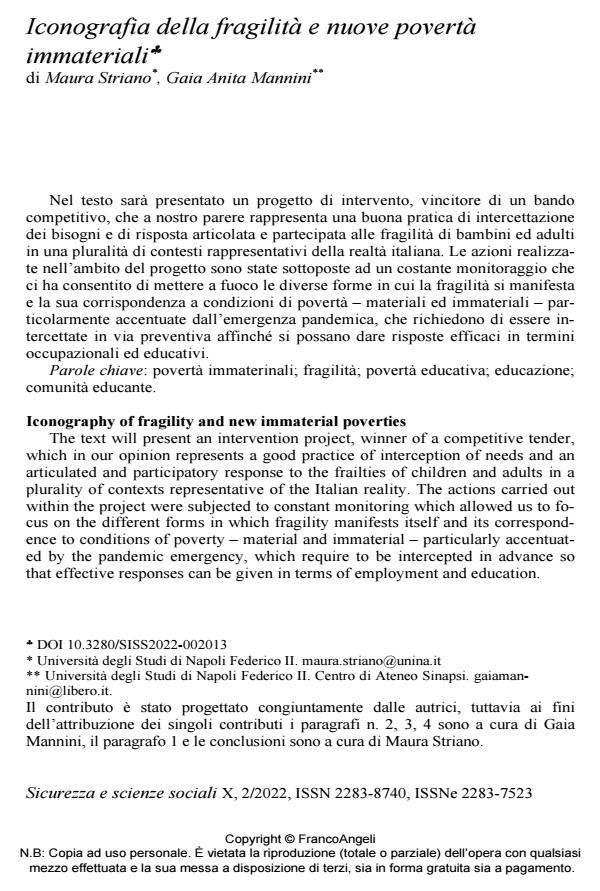Iconography of fragility and new immaterial poverties
Journal title SICUREZZA E SCIENZE SOCIALI
Author/s Maura Striano, Gaia Anita Mannini
Publishing Year 2022 Issue 2022/2
Language Italian Pages 19 P. 185-203 File size 221 KB
DOI 10.3280/SISS2022-002013
DOI is like a bar code for intellectual property: to have more infomation
click here
Below, you can see the article first page
If you want to buy this article in PDF format, you can do it, following the instructions to buy download credits

FrancoAngeli is member of Publishers International Linking Association, Inc (PILA), a not-for-profit association which run the CrossRef service enabling links to and from online scholarly content.
The text will present an intervention project, winner of a competitive tender, which in our opinion represents a good practice of interception of needs and an articulated and participatory response to the frailties of children and adults in a plurality of contexts representative of the Italian reality. The actions carried out within the project were subjected to constant monitoring which allowed us to focus on the different forms in which fragility manifests itself and its correspondence to conditions of poverty - material and immaterial - particularly accentuated by the pandemic emergency, which require to be intercepted in advance so that effective responses can be given in terms of employment and education.
Keywords: immaterial poverty; fragility; children poverty; education; educating community.
Maura Striano, Gaia Anita Mannini, Iconografia della fragilità e nuove povertà immateriali in "SICUREZZA E SCIENZE SOCIALI" 2/2022, pp 185-203, DOI: 10.3280/SISS2022-002013